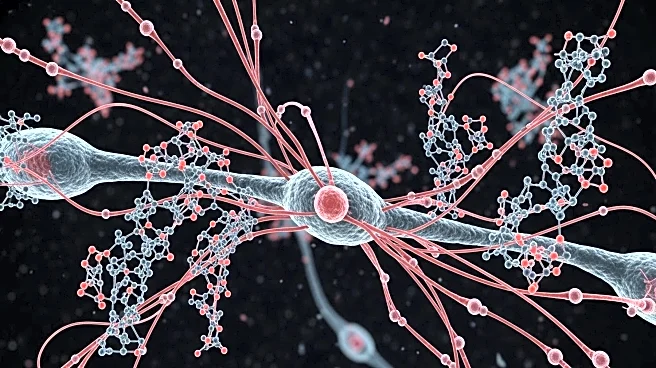What's Happening?
Research published in Nature has identified the role of long noncoding RNA H19 in promoting a mesenchymal-like invasive phenotype in mesothelial primary cells. The study highlights how H19 interacts with HDAC1 to mediate a switch involving WT1 and Sp1, influencing cell plasticity and fibrosis. This interaction alters chromatin structure, affecting gene expression. The research involved isolating mesothelial cells from peritoneal dialysates of patients and treating them with TGFβ1 to enhance mesenchymal-like features. The study utilized various techniques, including western blotting and confocal microscopy, to analyze the effects of H19 on cell behavior.
Why It's Important?
Understanding the role of H19 in cell invasion and fibrosis is crucial for developing therapeutic strategies for diseases characterized by these processes, such as cancer and fibrotic conditions. The findings could lead to advancements in targeted treatments that modulate H19 activity, potentially improving patient outcomes. This research also contributes to the broader understanding of noncoding RNAs in gene regulation, which is vital for the development of RNA-based therapies. Industries focused on biotechnology and pharmaceuticals may find these insights valuable for drug development and personalized medicine approaches.
What's Next?
Further studies may explore the therapeutic potential of targeting H19 in diseases involving cell invasion and fibrosis. Researchers could investigate the molecular mechanisms underlying H19's interactions with HDAC1 and other factors, aiming to develop inhibitors or modulators. Clinical trials may be initiated to test the efficacy of treatments targeting H19 in relevant diseases. Stakeholders, including pharmaceutical companies and healthcare providers, are likely to monitor these developments closely, considering the implications for drug development and patient care.
Beyond the Headlines
The study underscores the complexity of gene regulation and the potential of noncoding RNAs as therapeutic targets. It also highlights ethical considerations in manipulating genetic pathways for treatment, prompting discussions about the balance between innovation and safety in medical research. The findings may inspire interdisciplinary collaborations between geneticists, clinicians, and ethicists to address these challenges.











